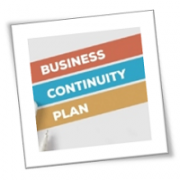Small and medium-sized businesses often stretch themselves thin, with IT management becoming a significant burden. Seeking external IT support through a managed IT services provider (MSP) is a common solution. However, understanding the role of an MSP and choosing the ideal partner can be confusing without a little help. Fortunately, we’ve provided this guide, listing the benefits of MSPs and factors to consider when partnering with one.
MSPs and their benefits
An MSP is a third-party IT expert that takes over managing a business’s IT while providing comprehensive technology support solutions, leading to multiple advantages, including:
- Access to expertise: MSPs bring extensive knowledge and experience, as they stay current with the latest technology trends and practices.
- Improved focus: By offloading IT responsibilities to an MSP’s capable and well-equipped personnel, you can concentrate on your business’s core objectives, driving innovation and growth.
- Robust security: MSPs implement and maintain complex security measures, safeguarding your systems and data from cyberthreats.
- Enhanced productivity: With an MSP proactively addressing IT issues and providing readily available support, you can minimize downtime and enhance productivity.
- Cost efficiency: MSPs typically provide services for a predictable monthly fee, simplifying budget planning and eliminating the need for large upfront investments in hardware, software, and personnel.
How to select an MSP
With so many MSPs in the market, it can be difficult to navigate the possibilities and find one that aligns with your business needs. However, you can simplify the decision-making process by considering the following aspects:
- Expertise and experience: When choosing an MSP , assess their depth of IT knowledge and experience. The ideal MSP should understand complex IT challenges beyond basic troubleshooting. Look for expertise in areas critical to modern businesses, such as cloud migration, cybersecurity, and network architecture. Additionally, you should check that the MSP has experience with your industry and can tailor their services accordingly.
- Service level agreements (SLAs): A clear and comprehensive SLA outlines the MSP’s commitment to service delivery. Key aspects to analyze in an SLA include how much uptime they guarantee and their promised response times in case of a problem.
- Communication: Successful MSP partnerships hinge on clear and effective communication. When interviewing potential MSPs, measure how quickly, effectively, and affably they respond to your inquiries. It’s important to choose an MSP that can explain technical matters in a way that is easy to understand for non-technical users. Furthermore, collaboration is key; look for an MSP that is willing to collaborate closely with your team to achieve goals unique to your business.
- Financial stability and reputation: It’s important to ensure their financial stability for long-term service reliability. How long the MSP’s been in business can tell you a lot about their financial standing and long-term sustainability, so make sure to look into that. Also, customer reviews and testimonials can tell you a lot about an MSP and how they conduct themselves. Additionally, never hesitate to request client references to speak with existing clients about their experiences with the MSP.
- Flexibility and scalability: Whether it’s due to business growth or market shifts, your IT needs will change. Therefore, it’s crucial to choose an MSP that is adaptable and can adjust their services to meet fluctuating IT requirements.
- Cost efficiency: Cost is naturally a major consideration when choosing an MSP. Pricing models vary, with options such as fixed fees or hourly rates. It’s important to compare different pricing structures to find the best fit for your budget. Also, when evaluating cost effectiveness, consider not just the upfront cost but also the potential cost savings and productivity gains an MSP can deliver.
Choosing an MSP is an investment in your business’s future. By carefully evaluating the factors outlined above and establishing open communication with the provider, you can build a successful partnership that drives growth and innovation.
If you are looking for an expert to help you find the best solutions for your business talk to GCInfotech about a free technology assessment
Published with consideration from TechAdvisory.org SOURCE





